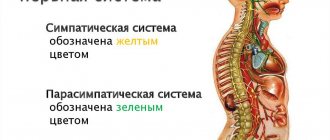Do you suffer from chronic headaches and migraines? Are you looking for a natural remedy that can effectively deal with this pain? Then perhaps you should try tansy, a plant well known for its ability to relieve headaches.
For hundreds of years, this plant has been used in folk medicine to treat fever, headaches, stomach pain, toothache, insect bites, infertility, menstrual problems and to ease childbirth. Now tansy is also used for migraines, rheumatoid arthritis, psoriasis, allergies, asthma, tinnitus, dizziness, nausea and vomiting.
Tansy owes its ability to relieve pain to the compound parthenolide, which fights the dilation of blood vessels that occurs during migraines. This substance may be even more effective than non-steroidal anti-inflammatory drugs (NSAIDs) such as aspirin!
What is maiden tansy?
Tansy (Tanacetum parthenium) is a herbaceous plant of the Asteraceae family with small daisy-like flowers. The plant is native to the Balkan Mountains in eastern Europe. It now grows throughout Europe, as well as North and South America.
The dried leaves (sometimes also flowers and stems) are used to prepare dietary supplements in the form of capsules, tablets and liquid extracts. Sometimes the leaves are consumed fresh.
The chemical composition of tansy has been well studied; Among the most important components of the plant are sesquiterpene lactones, the main of which is parthenolide (it is this that gives the plant its anti-inflammatory properties). Tansy also contains flavonoids and volatile oils.
Benefit for health
Relieves headaches
Research shows that consuming tansy helps reduce the incidence of migraines and other headache symptoms, including nausea, vomiting, and sensitivity to light and noise.
A number of studies involving volunteers have revealed the positive effects of tansy on the treatment and prevention of migraines. In the UK, a survey of 270 people suffering from migraines showed that more than 70% of respondents felt much better if they ate 2-3 fresh leaves of the plant daily.
Another study, published in the journal Clinical Drug Investigation, used a combination of tansy and white willow bark, which contains chemicals also found in aspirin. Participants in the experiment who took this mixture twice a day for 12 weeks noted a decrease in migraine attacks, and the pain became less intense and long-lasting.
Moreover, a systematic review conducted by the UK School of Postgraduate Medicine and Health Sciences compared the results of six studies. Scientists have found that tansy is effective in preventing migraines and in most cases does not cause side effects.
Thus, a number of studies confirm that tansy is an effective natural remedy for combating migraines and headaches.
Soothes rheumatoid arthritis
Rheumatoid arthritis is a chronic inflammatory disease that typically affects the small joints in the hands and feet. An autoimmune disorder, rheumatoid arthritis occurs when the immune system mistakenly attacks its own tissues. Tansy is believed to inhibit the production of prostaglandins, a hormone-like substance that causes pain and inflammation.
In a 1989 study, women suffering from symptomatic rheumatoid arthritis were given tansy to relieve symptoms (earlier laboratory experiments had confirmed the plant's ability to reduce inflammation). Participants in the experiment received 76 mg of dry tansy in powder form, although the most effective dose was considered to be 100-125 mg. Scientists concluded that it is likely that in larger doses the plant may be useful for rheumatoid arthritis.
In 2009, another study conducted by the Department of Orthopedics, Osaka University Graduate School of Medicine, Japan, also found that parthenolide "reduced the severity of joint injuries in an experimental animal model." These observations suggest that tansy can be part of the diet for arthritis, but it is worth noting the need for a more in-depth study of its properties.
Treats dermatitis
Dermatitis is a general term that describes inflammation of the skin. It has many causes and manifests itself in a variety of forms. Dermatitis usually occurs as an itching and rash on a swollen and/or red area of the skin. Tansy has a powerful anti-inflammatory effect, which means it can help relieve redness.
Studies have shown that the plant can reduce the number of damaged skin cells, reduce inflammation and improve the appearance of the skin. In 2009, scientists found that tansy extract (without parthenolide) has a powerful anti-inflammatory effect. Thus, this plant can help relieve skin inflammation without the risk of immune sensitization.
If you suffer from rosacea or regularly experience rashes, a topical treatment with tansy may help relieve these ailments. In addition, the plant protects the skin from exposure to UV rays.
Possibly fighting cancer
A study published in the Journal of Medicinal Food demonstrated the anticancer effects of tansy extract on two human breast cancer cell cultures (Hs605T and MCF-7) and one human cervical cancer cell culture (SiHa). Tansy ethanol extract slowed the growth of all three cancer cell cultures.
Among the plant constituents tested (parthenolide, camphor, luteolin and apigenin), parthenolide showed the strongest inhibitory effect. Although further study is needed, promising study results suggest tansy may be a natural treatment for cancer.
Prevents the formation of blood clots
Blood usually flows freely and evenly through the vessels, but if plaques or blood clots form in the vessels, the result can be very serious health problems or even death. Blood clots in blood vessels (thrombosis) can lead to heart attacks or strokes.
Research has shown that tansy may have antithrombotic effects. As an antithrombotic agent, it prevents the formation and expansion of plaques, thus reducing the risk of death.
Melissa
In ancient Greek medicine, lemon balm occupied a significant place. With its help, baldness was treated, body temperature was reduced and libido was increased. She also helped drive snakes out of houses.
Recipe for lemon balm tea to relieve tension and headaches
| Compound | 5-6 tsp. fresh leaves or 2 tsp. dry lemon balm, glass of water |
| Step by step process diagram | Brew herbs in a teapot or thermos. Leave for 15-20 minutes. |
| How to take treatment | Drink like tea in any quantity. |
Tansy and Butterbur
Like tansy, butterbur has long been used as a natural remedy for migraines and headaches. Both plants can cope with a number of other diseases. However, it is very difficult to find a nutritional supplement containing both types of plants.
Butterbur in folk medicine is used to treat ailments such as:
- Pain
- Migraine
- Anxiety
- Cough
- Heat
- Gastrointestinal disorders
- Urinary tract diseases
- Acceleration of wound healing (externally)
Today butterbur is used for:
- Allergic rhinitis
- Allergic skin reaction
- Asthma
- Migraines
Substances in raspberries will help cope with heart disease, excess weight and even cancer.
Traditionally, tansy is used for:
- Heat
- Headache
- Stomach ache
- Toothache
- Insect bites
- Infertility
- Problems with menstruation and difficult childbirth
Recently, tansy is increasingly used to treat the following symptoms:
- Migraine
- Rheumatoid arthritis
- Allergy
- Asthma
- Noise in ears
- Dizziness
- Nausea and vomiting
Both plants can be used for:
- Pain
- Heat
- Gastrointestinal disorders
- Migraines and headaches
- Skin problems
- Asthma
- Allergies
Folk remedies for headaches with high blood pressure
— A product with a double effect. And the headache will go away, and the eyes will rest, and the skin around the eyes will receive a pleasant caring procedure. So, just take two slices of fresh cucumber and place it on your eyes for 10-15 minutes.
— For headaches associated with hypertension, foot and hand hot baths are recommended. For legs, try using a folk remedy such as mustard. The water temperature should be 38-40 degrees, stir 2 tablespoons of mustard in it and keep your feet in the bath for 10 minutes. Quickly rinse your feet, dry with a towel and put on warm socks.
Interesting Facts
The plant's English name (feverfew) comes from the Latin word febrigua, which means “relieving heat.” Greek physician Dioscorides, who lived in the 1st century AD. e., prescribed tansy for “all hot inflammations.”
The ancient Greeks called tansy "Parthenium", presumably because the plant was used to treat those who fell from the Parthenon during its construction in the 5th century BC. e. Dioscorides used it as an antipyretic. In the Middle Ages until the 17th century, it was used as aspirin.
In Central and South America, tansy has been used to treat a number of diseases. Indians from the Andean mountains valued its ability to fight colic, kidney pain, morning sickness and abdominal pain.
Costa Ricans use tansy infusion to improve digestion, as a cardiotonic, emmenagogue (herb to stimulate blood flow in the pelvic and uterine area) and as an enema for deworming. In Mexico, the plant is used as an antispasmodic and tonic to normalize menstruation. In Venezuela, tansy is used to treat ear pain.
Dosage
Dietary supplements with tansy can be found in the form of capsules, tablets and liquid extract. Tansy in preparations is present in fresh, sublimated or dried form. Dietary supplements used in clinical studies contain a standard dose of parthenolide (at least 0.2%).
To prevent or stop headaches, an adult should take 100-300 mg of tansy no more than 4 times a day with a parthenolide content of 0.2% to 0.4%. For children aged 2 years and older, the norm is calculated depending on weight. As a rule, the adult dosage for most medicinal herbs is based on a person weighing 70 kg. Thus, if a child weighs 20 kg, then the appropriate amount for him will be approximately 1/3.
Freeze-dried tansy capsules are more popular because the fresh leaves have a bitter taste and can irritate the mouth. The leaves are added to tea, but the bitterness still remains
Folk remedies for headaches
— Chamomile tea is an excellent antispasmodic with a wide spectrum. Traditional medicine recommends it to relieve headaches, as well as discomfort in the stomach and intestines, in severe conditions before menstruation. In addition, chamomile tea activates the functions of the immune system, which makes it an extremely valuable remedy for treating colds at home.
— One of the best folk remedies for severe headaches is lemon balm. Pour 3 tablespoons of dry herb with a glass of boiling water. Cover with a saucer and let sit for about half an hour. Strain and drink 2 tablespoons every 2 hours. We also recommend adding lemon balm to regular tea and soothing medicinal mixtures. This wonderful herb relieves headaches accompanied by tinnitus and helps cope with insomnia.
— Another savior for those suffering from headaches is valerian. Pour a tablespoon of finely ground valerian root with a glass of boiling water and boil for a quarter of an hour over low heat. Let the broth sit for 10 minutes and then strain. Take this folk remedy one tablespoon 3 times a day.
— Medicinal mixtures work better than tablets and, although it is also advisable to alternate them for greater effectiveness, they are practically not addictive. Here is an excellent composition for obtaining a natural analgesic: take peppermint, fireweed and oregano in equal amounts. Pour half a tablespoon of the resulting medicinal mixture into a glass of boiling water. Let it brew under the lid, strain after half an hour. You can drink.
— A folk remedy for headaches is dill seeds. Take one and a half cups of boiling water for a tablespoon of seeds. Let it sit for half an hour, strain, and drink little by little throughout the day.
— Pour hot water over the thoroughly washed onion peel (you can cook it for a couple of minutes) and let the product sit for about an hour. Drink half a glass. If headaches become more frequent, you should drink half a glass of onion peel infusion twice a day for three to four days.
In an old medical book from 1890, the following procedure is recommended as an effective folk remedy for treating headaches. Prepare a glass of hot tea and warm a metal spoon in it. Apply the spoon to the wing of the nose on the side where the headache hurts (if it hurts on both sides, then manipulations should also be done on both sides). Once the spoon has cooled, warm it again in tea and apply it to your nose again. Next, warm the cooling spoon and apply it again. Then a hot teaspoon is applied to the earlobe on the side where it hurts. Warm your fingers in a hot glass of tea. After the pain subsides, you can drink the tea.
— You can relieve a headache using folk remedies using a compress. Dampen a natural cloth with cold water and vinegar (a teaspoon of natural apple cider vinegar per liter of water) or salt (also a teaspoon per liter of water). Wet a cloth in cold water, wring it out and place it on your forehead and temples. Apply to your head for 5-10 minutes.
- Compresses made from raw, crushed cabbage leaves (simply applied or tied to the head) and lotions made from raw potatoes at the temples and forehead also help. Potatoes can be grated and placed in a gauze bag, or you can simply use freshly cut potato slices.
An interesting procedure for relieving headaches: tapping the bridge of the nose with the large phalanx of the thumb. This needs to be done for quite a long time - at least 5, and preferably 10-20 minutes.
— If your head not only hurts, but is dizzy, and you feel very tired, then you need to drink a decoction of hawthorn fruits. Pour 20 grams of berries into a glass of boiling water, simmer over low heat for 10 minutes, cool to a comfortable temperature, and drink on an empty stomach.
— A folk remedy for severe headaches is cinnamon. Pour 1 gram of ground cinnamon into a glass of hot water. After half an hour, add a little sugar and drink a small sip. You can moisten a napkin in a similar infusion and then apply it to your temples or forehead.










